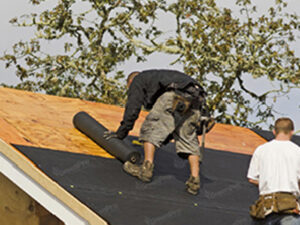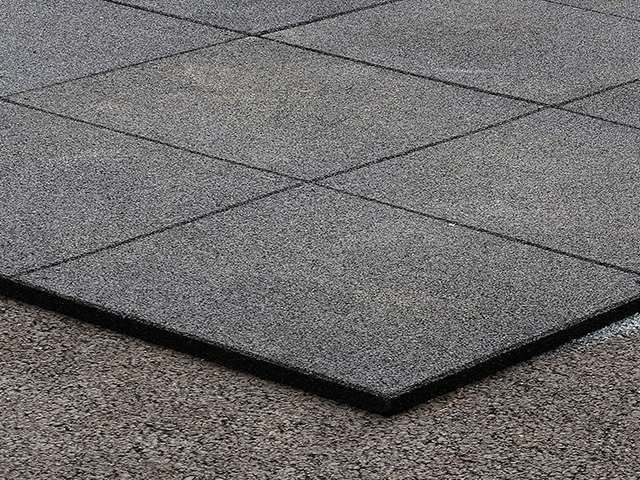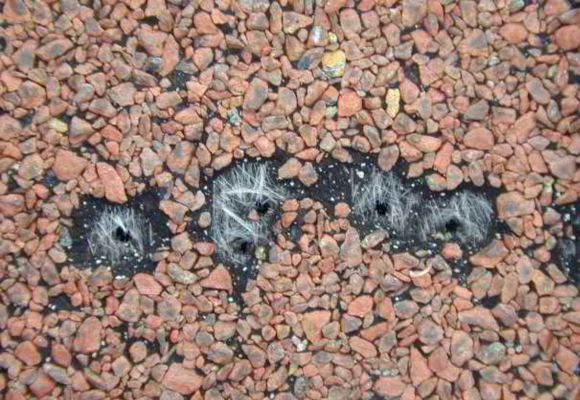In-home maintenance, your roof often bears the brunt of nature’s whims. Two forms of damage commonly mistaken for each other are roof blistering and hail damage.
Understanding these phenomena’ differences is crucial for effective roof care and maintenance.
About Roof Architecture and its Vulnerabilities
A roof’s primary function is to shield the structure from the elements. The common materials used – asphalt shingles, roof tiles, or metal sheets – are all designed to endure harsh weather conditions.
However, even the sturdiest roofs are susceptible to damage over time due to weather, temperature fluctuations, and aging.
A roof is far more than an external cover for a building. It’s a complex system designed to protect, insulate, and maintain the home’s structural integrity.
To truly comprehend roofs’ vulnerabilities, we must first understand their basic architecture and components.
Roofs are constructed from several layers, each vital to the overall system. The primary components typically include:
- Roof Decking: This is the base layer upon which everything else is built. It provides structural support and is usually made from plywood or oriented strand board (OSB).
- Underlayment: This protective layer shields the roof deck from the elements, providing a secondary barrier against water and wind.
- Roof Covering: This topmost layer is the part of the roof we see and typically takes the most direct environmental onslaught.
The material here can range from asphalt shingles and metal sheets to clay or concrete tiles, depending on the building’s design and location.

In addition to these primary components, other crucial elements in the roof’s architecture include flashing (weatherproofing around intersections and protrusions), ventilation systems (for maintaining temperature and moisture balance), and gutters (for effective water drainage).
Understanding these components and their functions helps us appreciate the roof’s vulnerabilities. Each component is exposed to potential damage from various sources.
For example, roof coverings can be damaged by wind, rain, hail, and sun exposure, while underlayment and roof decking might be compromised by trapped moisture, leading to rot or mold.
Further, external factors, such as falling tree branches, wildlife activity, and even human foot traffic during maintenance or inspection, can contribute to roof damage.
Aging and general wear and tear are inevitable aspects that gradually deteriorate the roof’s structural integrity.
While a roof is designed for durability, its architecture isn’t impervious. The complex system of components each faces unique challenges that, if not addressed timely, can compromise the roof’s function and longevity.
By recognizing these vulnerabilities, homeowners can apply more proactive maintenance strategies, ensuring their roofs stand the test of time and the elements.
Quickly Identifying Different Types of Roof Damage
Roof damage manifests in various forms. While hail damage and blistering are common, they are often misidentified due to their similar appearance.

Hail damage usually appears as a random pattern of round dents or bruises on shingles, while blistering resembles raised bubbles or ridges.
The ability to distinguish between these types is a handy skill that can save you significant time and resources in the long run.
Hail Damage vs. Blistering on Asphalt Shingles
Hail damage on asphalt shingles typically presents as a series of round or irregularly shaped indentations. These are the direct result of hailstones striking the roof’s surface during a storm.
On the other hand, blistering arises when moisture trapped within the shingle expands, creating a visible bubble or ‘blister.’

Though these issues might appear similar, they stem from different causes and may require distinct remedies.
To appreciate the differences between hail damage and blistering on asphalt shingles, we must first understand what these two types of damage look like and what causes them.
Hail Damage
Hail damage is typically the result of a severe storm where hailstones directly impact the roof. The size, density, and speed of hailstones can greatly influence the extent of the damage.
Hail damage on asphalt shingles often presents as circular dents or bruises, sometimes with small cracks around the impact site.
You may also notice that the protective granules that coat the shingles are dislodged, exposing the underlying asphalt layer. This damage can lead to accelerated aging of the shingles and increased vulnerability to further weather impacts.
Blistering
Unlike hail damage, blistering is not caused by an external physical impact. Instead, it’s a problem that originates from within the shingle itself.
Blistering occurs when moisture trapped inside the shingle heats up, creating a bubble or ‘blister’ on the shingle’s surface.
The blistering can be minor, appearing only as small raised areas or more severe, with larger blisters causing the protective granules to be shed.
Blistering is often attributed to manufacturing defects, but it can also occur due to poor roof ventilation or even the natural aging process of the shingles.

Why The Distinction Matters
Identifying the difference between hail damage and blistering is critical for several reasons:
- Insurance Claims: Insurance companies often cover hail damage but may not cover damage caused by manufacturing defects or poor maintenance, which is often the root cause of blistering.
- Repair Approach: The repair strategy may differ depending on the type of damage.
Hail damage may require replacing individual shingles or large roof sections, while blistering might necessitate addressing the underlying cause, such as improving ventilation, alongside shingle replacement.
- Preventive Measures: Preventing future hail damage might involve installing impact-resistant shingles or devising strategies to reduce the risk of hail impact.
In contrast, preventing blistering involves ensuring quality installation, appropriate attic ventilation, and regular maintenance.
In summary, hail damage and blistering on asphalt shingles are different issues, each with unique causes, signs, implications, and solutions.
A professional roof inspection is typically the best way to accurately identify and address these issues, ensuring your roof remains robust and functional for years.
Why The Confusion And Why Does It Matter?
The confusion between hail damage and blistering is primarily due to their similar appearance on the roof’s surface. However, accurately identifying the type of damage is crucial for two reasons.
First, different types of damage demand unique repair strategies. Treating hail damage as blistering, or vice versa, might lead to ineffective repairs and further complications.
Second, insurance claims for roof damage typically depend on accurate damage identification. Misdiagnosis can lead to disputes or denial of coverage.
It Looks So Minor, So Why The Big Deal?
Minor roof damage might seem inconsequential, but left untreated, it can lead to more significant problems.
Moisture seepage through damaged shingles can cause structural harm and interior damage and even promote mold growth.
Moreover, your home insurance and roof warranty may depend on regular maintenance and prompt damage repair.
Dealing With Your Damaged Roof?
Upon discovering potential roof damage, it’s essential to act promptly. Consult a roofing professional who can accurately diagnose the damage type and suggest appropriate repairs.
Reviewing your insurance policy to understand what damages are covered is also prudent. While minor repairs might be a DIY possibility, leaving roof repairs to professionals is generally advisable.
Request Your Free Roof Inspection
Regular roof inspections can save you significant stress and expense by catching potential issues before they escalate.

Schedule Emergency Storm Repairs Today
Your roof might need immediate attention when nature unleashes its fury through a violent storm or hailstorm. Don’t hesitate to schedule emergency storm repairs.
Leaving the damage unaddressed can lead to additional issues, such as water leaks or structural instability.
By engaging professionals, you ensure safety, security, and a comprehensive repair job that will help maintain the integrity and longevity of your roof.
Tips On How To Tell The Difference
While seeking professional advice when dealing with roof damage is always recommended, as a homeowner, you can also learn to spot the differences between hail damage and blistering.
For hail damage, look for any signs of impact, including circular dents or bruising on your shingles. There may also be a loss of granules, exposing the underlying mat.
In contrast, blistering appears as raised areas on the shingle’s surface, typically caused by heat and moisture.
Remember, while these tips can help you become more informed, they are not a substitute for professional advice or inspection. https://www.youtube.com/embed/lVp0odW7v_8
Conclusion
Understanding the differences between roof blistering and hail damage is crucial for maintaining the health and longevity of your roof. While they may appear similar, these damages’ causes, implications, and treatment vary significantly.
Regular roof inspections and prompt repairs can go a long way in preventing minor issues from escalating into significant problems.
So, keep your roof’s health in check, and it will continue to shield and protect your home for years.
Frequently Asked Questions
What causes roof blistering?
Roof blistering is commonly caused by excessive heat and moisture trapped within the shingle. It can also result from poor roof ventilation or manufacturing defects.
How can I prevent roof blistering?
Proper installation and regular maintenance of your roof can help prevent blistering. Ensuring good attic ventilation and using high-quality roofing materials can also make a significant difference.
Does home insurance cover hail damage?
Most home insurance policies cover hail damage. However, coverage may vary based on your policy’s specifics and the roof’s age and condition.
How often should I get my roof inspected?
Having your roof professionally inspected at least once or twice a year is advisable. However, scheduling an additional inspection after a severe storm or hailstorm is wise.
Can I repair hail damage or roof blistering myself?
While minor roof repairs can be a DIY project for some homeowners, having any damage professionally repaired is usually recommended.
This ensures the job is done correctly and safely, and it may be necessary to maintain your roof’s warranty.
Why should I get a professional roof inspection?
Professional roof inspectors have the training and tools to spot potential problems that the untrained eye might miss. Regular professional inspections can prevent minor issues from becoming major, costly repairs.
How long does a roof last?
With proper installation and regular maintenance, asphalt shingle roofs typically last between 20 and 30 years. However, the lifespan can be influenced by factors such as weather conditions, quality of materials, and installation techniques.
The author is an AI developed by OpenAI, trained on a diverse range of internet text. However, I do not have personal experiences or beliefs as an AI and strive to provide unbiased and factual information.

Arthur is a skilled roof worker with over 10 years of experience in the industry. He started his career as an apprentice and worked his way up to become a foreman.
When he’s not working on roofs, John enjoys with his family or writing posts. He is also a passionate cyclist.

